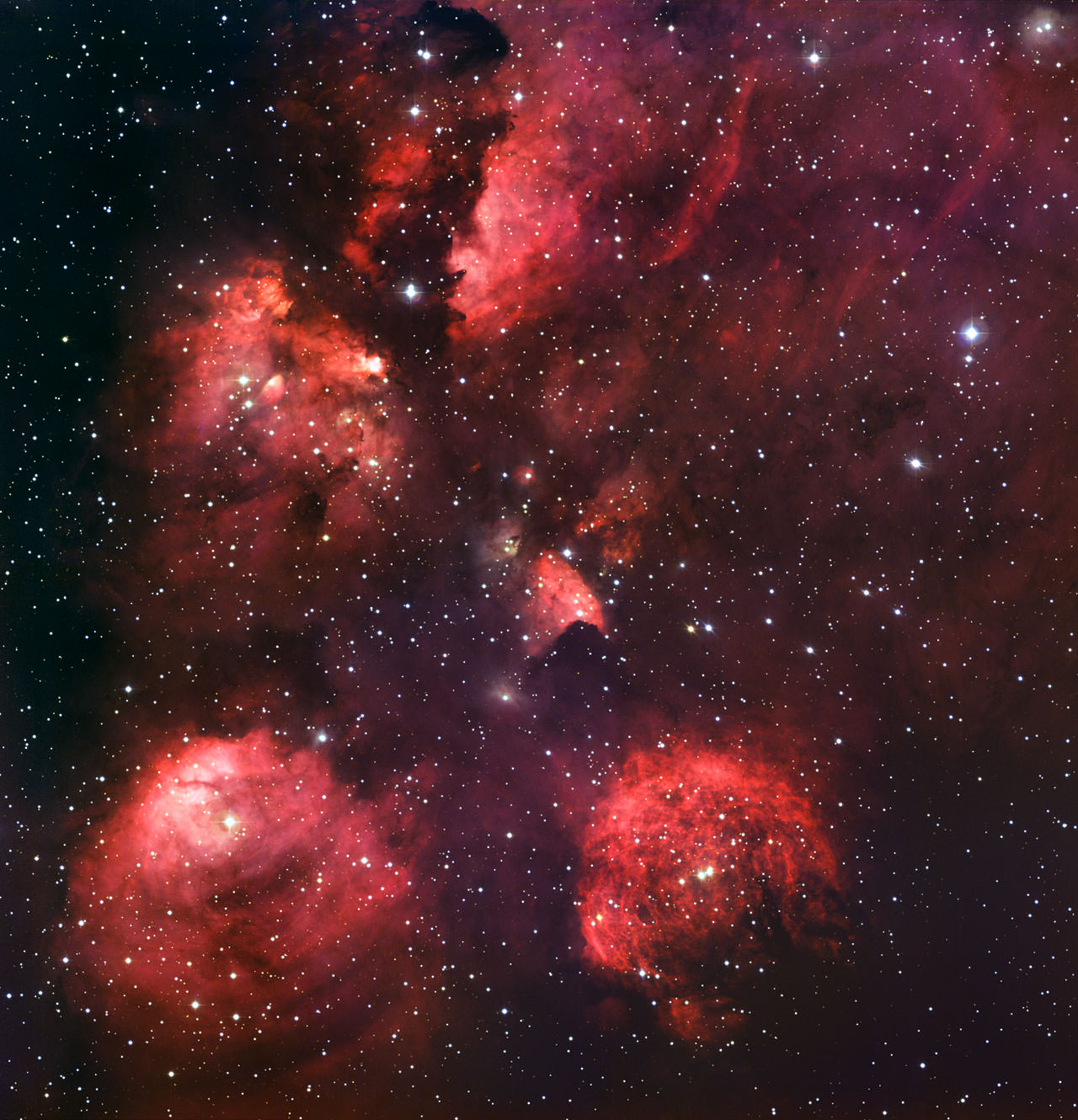[/caption]
This striking new image shows the vast cloud of gas and dust known as the Cat’s Paw Nebula or NGC 6334. This glowing nebula resembles a gigantic pawprint of a celestial cat out on an errand across the Universe. This complex region of gas and dust, where numerous massive stars are born, lies near the heart of the Milky Way galaxy, about 5500 light-years away. It covers an area on the sky slightly larger than the full Moon. The whole gas cloud is about 50 light-years across.
This new portrait of the Cat’s Paw was created from images taken with the Wide Field Imager instrument at the 2.2-metre MPG/ESO telescope at the La Silla Observatory in Chile, combining images taken through blue, green and red filters, as well as a special filter designed to let through the light of glowing hydrogen.
The nebula appears red because its blue and green light are scattered and absorbed more efficiently by material between the nebula and Earth. The red light comes predominantly from hydrogen gas glowing under the intense glare of hot young stars.
Particularly striking is the red, intricate bubble in the lower right part of the image. This is most likely either a star expelling large amount of matter at high speed as it nears the end of its life or the remnant of a star that already has exploded.
NGC 6334 is one of the most active nurseries of massive stars in our galaxy and has been extensively studied by astronomers. The nebula conceals freshly minted brilliant blue stars — each nearly ten times the mass of our Sun and born in the last few million years. The region is also home to many baby stars that are buried deep in the dust, making them difficult to study. In total, the Cat’s Paw Nebula could contain several tens of thousands of stars.
Click here to see videos that pan and zoom into this stunning new image.


Looks like Earth-based observatories can get images almost as good as the HST now!
OJB42 Says:
January 20th, 2010 at 2:28 pm
“Looks like Earth-based observatories can get images almost as good as the HST now!”
Indeed – they’re getting pretty bloody good, aren’t they? The area where Hubble still markedly out-performs though is on small (in angular size) objects – distant galaxies and clusters and whatnot. Still, the gap ever shrinks with the new technologies coming online…
What really impresses me though is that the pictures from some amateurs these days rivals some of those snapped with major observatories. If ground-based professional imaging has come far in catching up with the likes of Hubble, then amateur imaging has made nothing short of a spectacularly meteoric rise to catch up with the big observatories!
Astrofiend,
Check this out (not mine!),
http://www.robgendlerastropics.com/M31NMmosaic.html
Granted M31 is no small object but still a very nice shot made from mosaics.
Jaw-droppingly awesome ND – thanks for that… Way to illustrate the point!